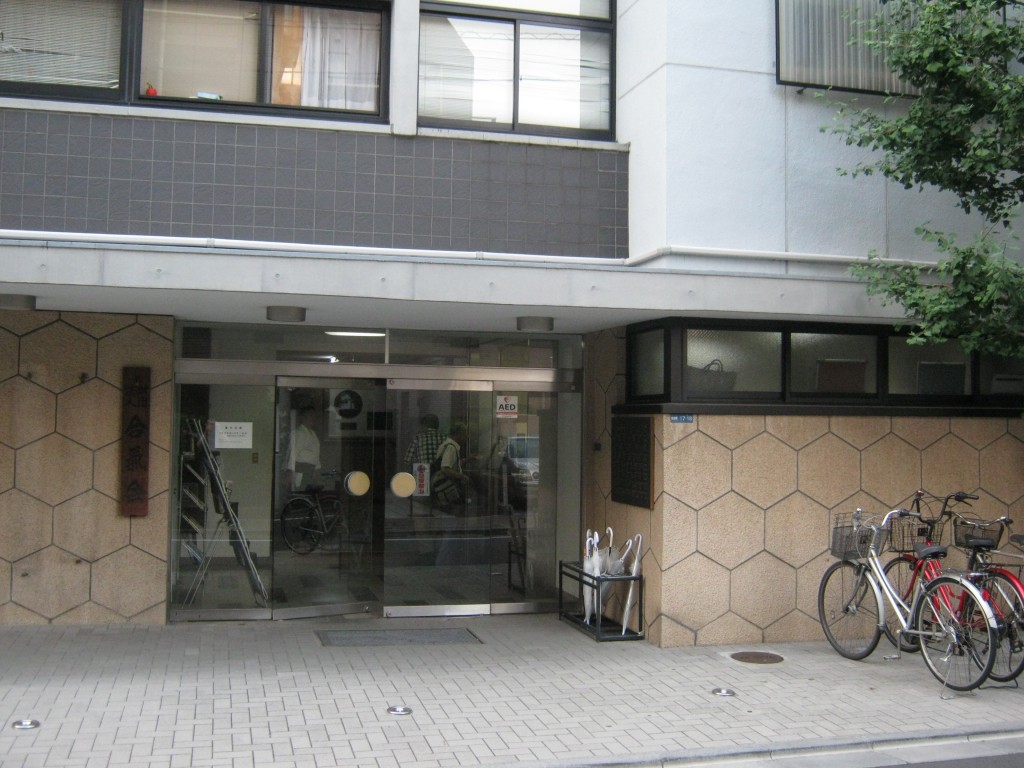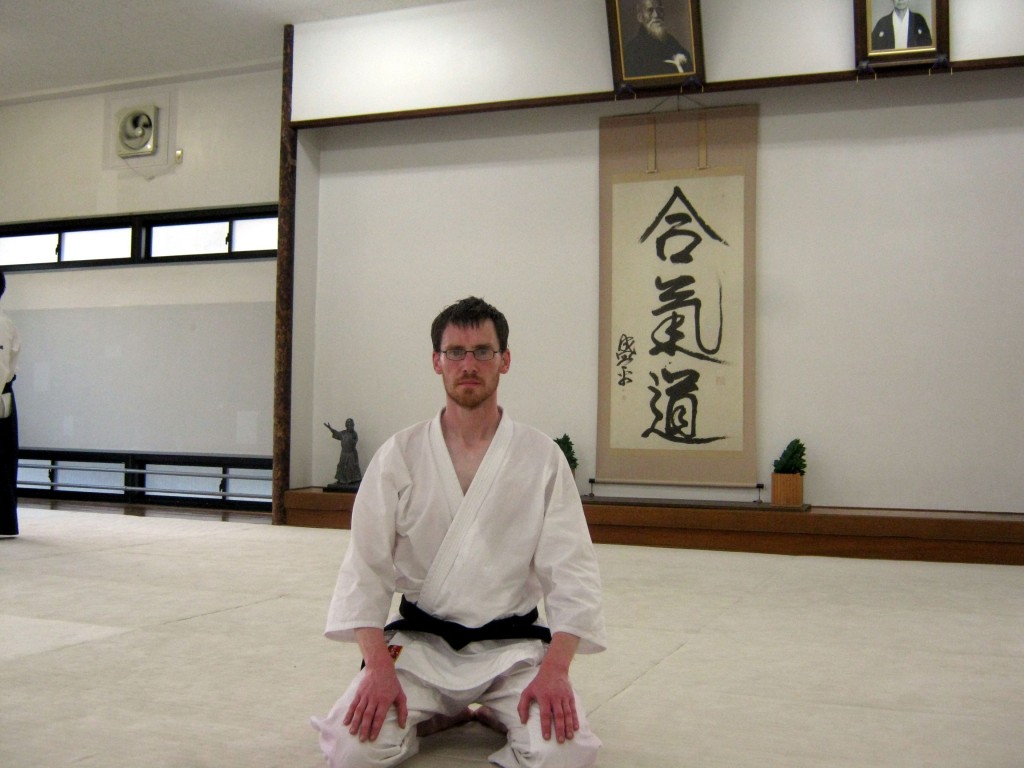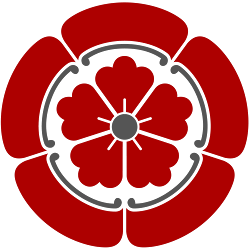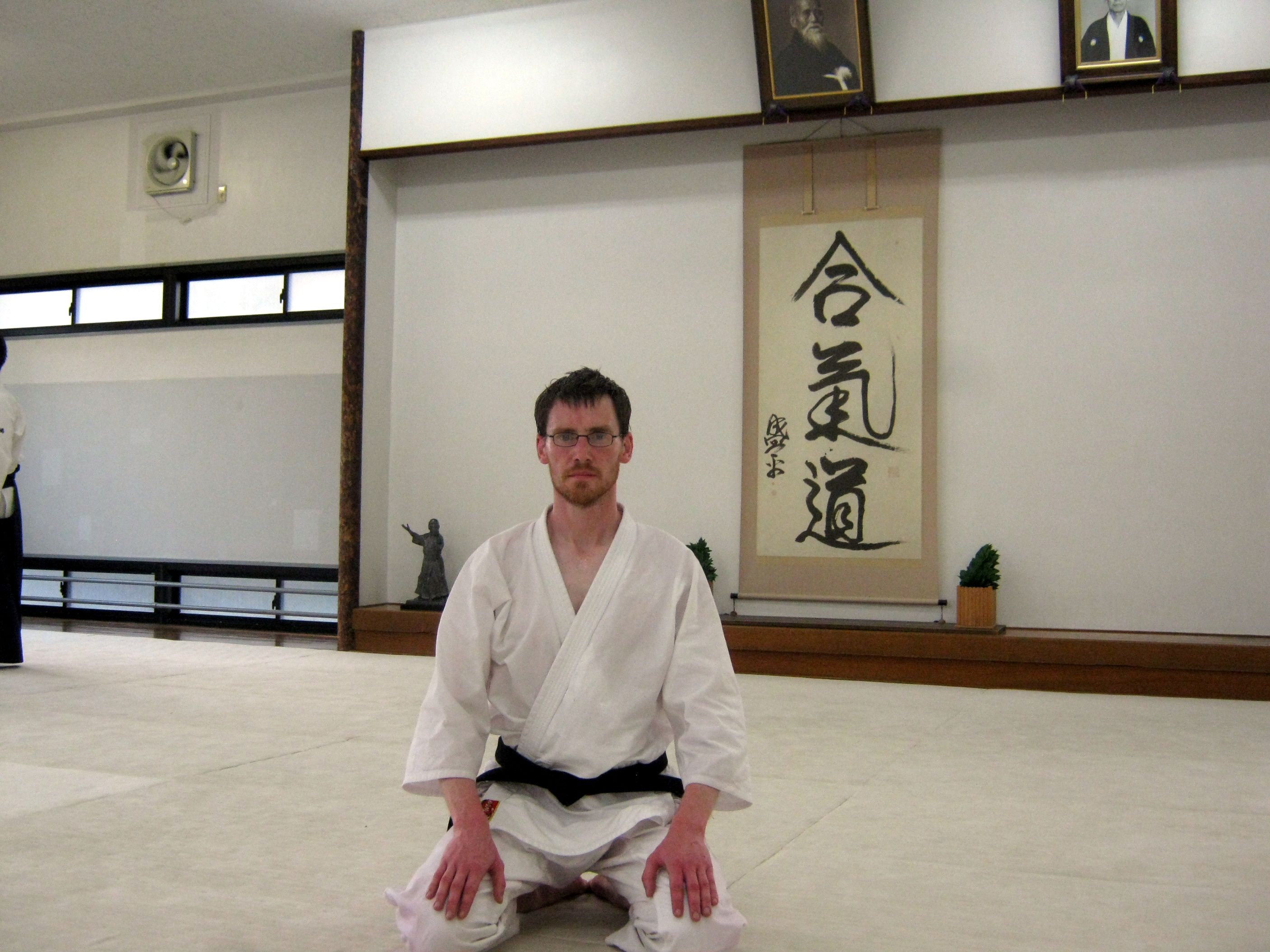Over two days in August 2013 I had the chance to do some training in the Aikikai Hombu Dojo in Tokyo. I visited the dojo after a week-long work trip, when I had just a few free days. It wasn’t my first time at Hombu. I had made another short visit during a brief stay in Tokyo in 2002. After such an interval I could only recall a few vague impressions (e.g. Doshu’s extremely busy 6.30am class, the explosive power of Yasuno shihan). And since my own level has progressed since then I hoped I could take something more from this experience.
The Hombu Dojo has an iconic status for aikidoka, and my excitement at the prospect of training there again gave way to nervous anticipation as I packed my bag to set out for my first class. It seemed daunting. How would I be treated when I arrived? Would I be able to stand the pace? Could I avoid injury? Would the experience be positive or punishing?

In the end, my experience was intense and very stimulating. I thought therefore to record some impressions and reflections here for anyone who hasn’t been to Hombu and is curious about the atmosphere there.
- It’s hot (in August at least). I came at the worst possible time of year, in the middle of the summer heat. The temperature was in the region of 30° and the humidity very high indeed. I had been in Japan for a week already (including Kyoto, where the weather is even hotter and more humid), so at least I had some chance to acclimatise. As I sat in seiza before the afternoon classes, waiting for the instructor to arrive, the sweat was already pouring down my face and under my suit. Thankfully, you could take a bottle of water and a hand-towel into the dojo and some instructors took a short break for water and drying off. If you sat in a strategic place during observation, you might even catch the wisp of a breeze coming through a window.
- The mats are hard. The tatami are slightly smaller than our 2 × 1 metre Olympic judo mats and quite a bit denser. The surface is cloth, not vinyl, and has a nice organic feeling under the feet. It does burn your feet more during suwari-waza, however. I could swear I could smell the straw filling.
- The standard is high, but not astronomical. Seeing a group of around 40–50 aikidoka in hakama at the start of training can be a bit intimidating, but as you train and observe you can see that the level of experience is mixed. The uchi-deshi (full-time students) appear at most classes, take ukemi from instructors during demonstration, and seem to have a very good physical condition. (I noticed they seemed to train often among themselves.) I practised with some aikido old-timers who clearly had a huge amount of experience. But it was reassuring to see other students like myself, just doing their best, however imperfectly.
- The students are friendly. Everyone I partnered with showed me a lot of courtesy, never used rough techniques and sometimes even stopped to encourage me to take water. They were patient and offered me guidance where necessary, in English when they could. After training they were very friendly indeed, enquiring after my name and where I was from, and suggesting some informal free practice. (It was good, incidentally, to see a mix between men and women, and all ages.)
- The instructors are impressive! Which of course goes without saying. Each of the shihan I trained under created a very distinct atmosphere on the mats. Taking ukemi for Namba was very enjoyable. He continually adapted to my movement, never performing the same technique twice. Kuribayashi cuts a powerful figure. His technique feels extremely soft and relaxed before all of sudden you’re blown out a cannon. I think he may have been slightly perplexed when I stood up smiling after each throw. Yokota stopped to correct many points of detail. He was light-hearted at times and cracked jokes.
- Overall, the style of teaching seems not dissimilar to Europe. All instructors emphasised small technical details. The number of repetitions during demonstration was sometimes very few, however, so you had to concentrate hard. Only Kuribayashi spoke at length about broader ideas (and even summarised in English for us gaijin). It was nice to see Kuribayashi come back on to the mats too, without hakama, after the end of his class, to chat to students and then exit through the changing rooms.
Training at the Hombu Dojo becomes less fraught after a few classes, as your confidence grows with experience. Every instructor’s class has a particular atmosphere though, and you would need to train with each consistently in order to begin to understand their approach.
After such a short trip, I can only record these brief impressions. I hope to have a chance to repeat the experience again.

Useful links
- Aikikai website
With timetables, information for visitors from overseas, etc. - The traveling Aikidoka’s guide to practice at the Aikikai Hombu Dojo
Excellent information on practicalities by Guillaume Erard. - First Practice at the Aikikai Honbu Dojo
Also by Guillaume, with a very useful map at the end.

